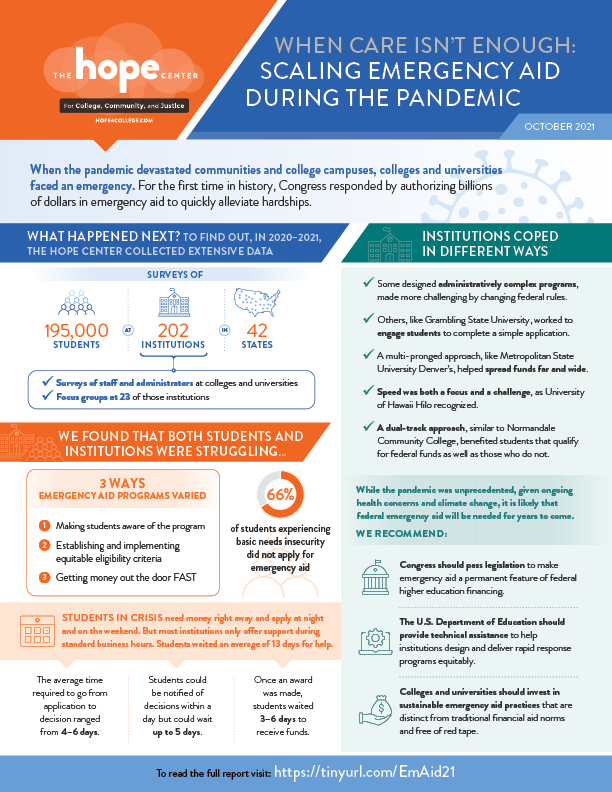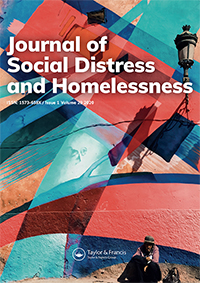Document Tag: #RealCollege Survey
National #RealCollege Survey Report #1: Hungry to Learn: Addressing Food & Housing Insecurity Among Undergraduates (2015)
First #RealCollege survey report- more than 4,000 undergraduates at 10 community colleges across the nation, half of all community college students are struggling with food and/or housing insecurity. Fully 20 percent are hungry and 13 percent are homeless.
When Care Isn’t Enough: Scaling Emergency Aid During the COVID-19 Pandemic (2021)
When the pandemic devastated communities and college campuses, colleges and universities faced an emergency. For the first time in history, Congress responded by authorizing billions of dollars in emergency aid to quickly alleviate hardships.
This report shows how colleges and universities met the challenge of emergency aid during the pandemic, drawing on a year of surveys and focus groups, fielded and conducted by The Hope Center and DVP-Praxis, that reflect the views of institutional leaders and students from coast to coast. The results offer valuable insights that should shape the future of emergency aid and student support. While the onset of the pandemic was unprecedented, its ongoing health concerns and the looming consequences of climate change ensure that knowing how to deliver emergency aid at scale will be essential to the well-being of future students. With these lessons in mind, we can all be better prepared and ready to respond.
A review of estimates of housing insecurity and homelessness among students in U.S. higher education (2019)
Lack of secure affordable housing is a substantial concern for many of today’s college students. Over the past two decades, the price of college has risen, the purchasing power of need-based financial aid has declined, and most family incomes have stagnated. This paper provides a review of estimates of the prevalence of housing insecurity, including homelessness, among college students in the U.S. from peer-reviewed and grey literature and a nationally representative study of undergraduates. Data from the latest National Postsecondary Student Aid Study indicate that nearly 1 in 10 U.S. undergraduates are homeless or self-supporting and at risk of homelessness; results from a review of extant research that utilizes multiple measures and samples is consistent with this national estimate. In addition, weighted results from the literature review indicate that 45% of college students experience some form of housing insecurity including problems related to housing unaffordability, instability, or homelessness. Community college students appear to be at greater risk of housing insecurity and homelessness in comparison to their peers at four-year colleges and universities. Given the scope and implications of this problem, programmatic and policy efforts to promote college success and student well-being must include consideration of students’ housing situations.
Going without: An exploration of food and housing insecurity among undergraduates (2018)
The rising price of higher education and its implications for equity and accessibility have been extensively documented, but the material conditions of students’ lives are often overlooked. Data from more than 30,000 two- and 4-year college students indicate that approximately half are food insecure, and recent estimates suggest that at least 20% of 2-year college students have very low levels of food security. At least one-third of 2-year students are housing insecure, including up to 14% who are homeless, whereas between 11% and 19% of 4-year students are housing insecure. Most of these students work and receive financial aid, but only a fraction receive public or private assistance to help make ends meet. Implications for research on college affordability and efforts to boost college graduation rates are discussed.



